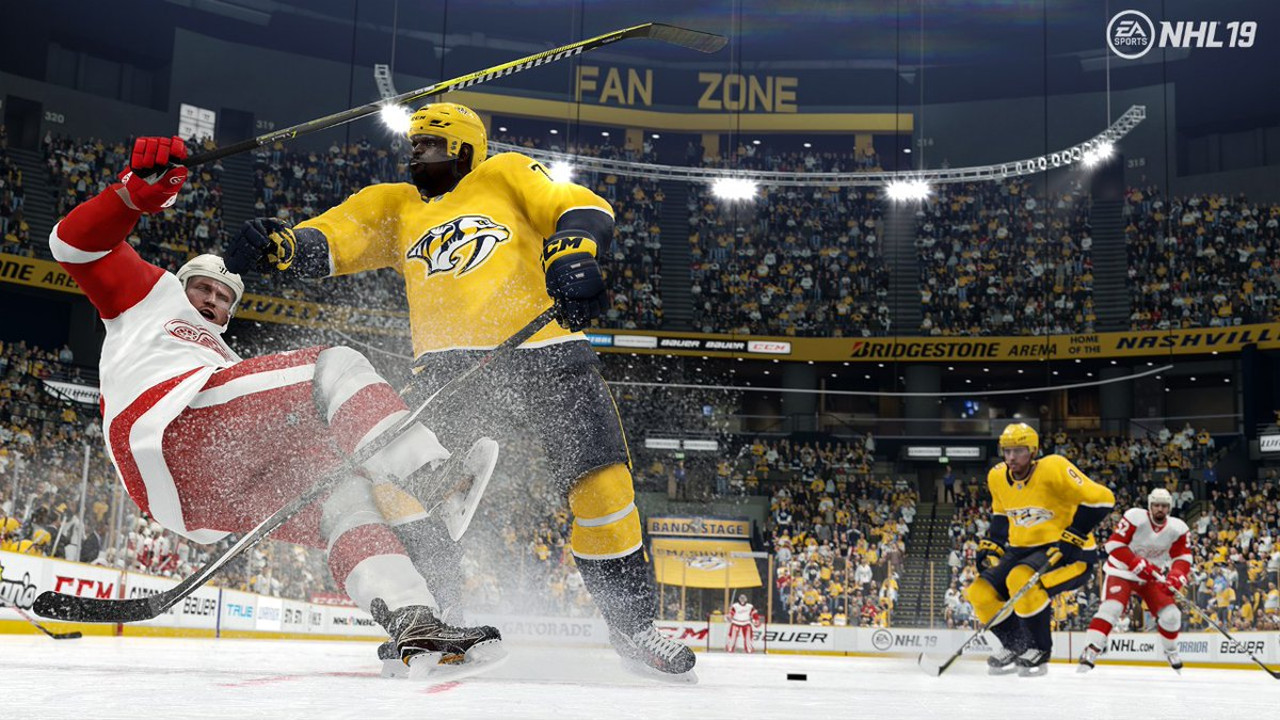The focus on collision physics in NHL 19

EA Sports laid out the features for NHL 19 a month ago now, including the debut of the Real Player Motion animation system, a 1v1v1 mode called NHL ONES, and outdoor rinks. Today the publisher offered additional details on work done to gameplay, specifically that of the improvements that have been made to the collision physics.
Collisions in NHL 19 are realistic, impactful, and fun, thanks to a reinvented physics system that overhauls how checking affects gameplay. Hits react to speed, angles, and skater physicality, bringing you an experience that looks better with new animations, and feels even better thanks to responsive controls. Keep reading to find out how Collision Physics make NHL 19 a true-to-life hockey experience.
Power like P.K.
Take control with authentic hits that send shock waves across the rink, commanding the physical side of the game. With new thrown-hit animations, unique limb tensions, and sensitive awareness of angles and speed, NHL 19 Collision Physics provide a variety of impacts that recreates the electrifying style of players like P.K. Subban.
All in the Timing
The goal of redesigning Collision Physics was two-fold: bring players an experience that looks better, and a game that responds in ways you’d expect. In addition to a players’ size, strength and hitting skill, Collision Physics will require you to think about details like angles, speed, and positioning when deciding whether to commit to a check or not. Hit tracking has undergone improvements that produce realistic collisions and give you more directional control over your hitting. Stop or start instantly and skate towards an opponent with speed as you look for that game-changing hit, or simply roll the left stick and take an arced path to glide towards your objective.
Either way, you’ll be able to decide exactly how you collide with your opponent, and the results are more accurate than ever before in NHL 19. The real-time responsiveness afforded by Collision Physics, in tandem with RPM Skating, means you’ll be able to time your checks just right.
No Two Hits are the Same
If you do catch your opponent with a collision, then you’ll notice thrown-hit animations that look more realistic and impact directional movement. How you throw a check is changed by the speed and angle of the collision, as chasing a skater from behind and pushing them will create very different collisions than a standstill shoulder check will.
Part of the variation in hit outcome has to do with unique limb tension and physicality, as NHL 19 Collision Physics allow for accurate distribution of force across the human body. Limbs, muscles, and joints now absorb force in ways you’d expect, as big collisions cause skaters to fold up like they would in real life. This applies to both skaters involved in the collision, as you’ll retain body position while checking your opponent along the boards, as opposed to bouncing right off of them.
You’ll also want to be aware of the relative angles between players involved in a collision, as this has an impact on force distribution and the resulting hit animation. Catching your opponent square to the center of their body will produce a much different collision than simply catching a piece of their shoulder, as angles, speed, physical tension, and thrown-hit animations all work together to produce limitless variations in hitting.
Don’t Fall Behind
Stamina plays a big role in hitting this year too, as endurance affects your ability to absorb a check. When your skater’s stamina is low late in a shift, avoid collisions at all costs, as this has a detrimental result in how quickly your player gets back up. Once you find yourself out of position in NHL 19, it will require even more stamina to return to a safe defensive stance.
While responsive controls allow you to change direction instantly, they also burn more stamina, which can be countered by avoiding sudden stops or starts when unnecessary. Keeping track of your skater’s stamina will help you make strategic decisions, such as utilizing a poke check to conserve energy as you attempt to disrupt the play. Make sure you have endurance in mind as you enjoy the endless number of unique hits available with NHL 19 Collision Physics.
